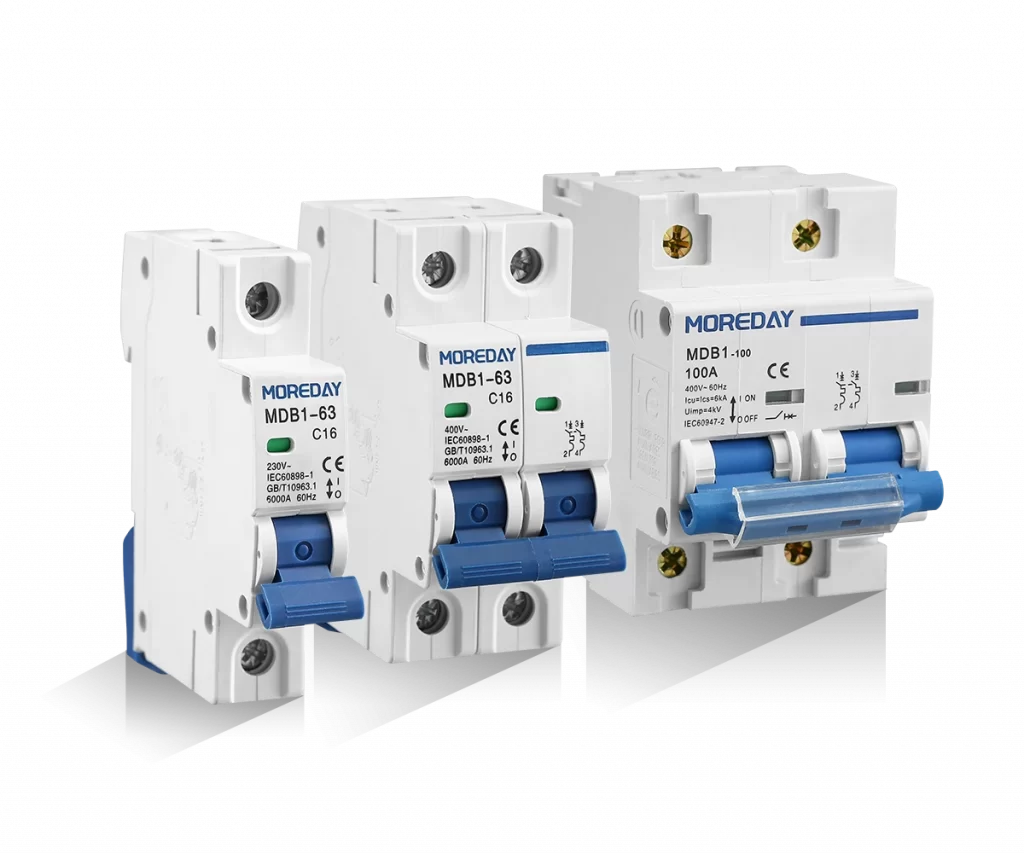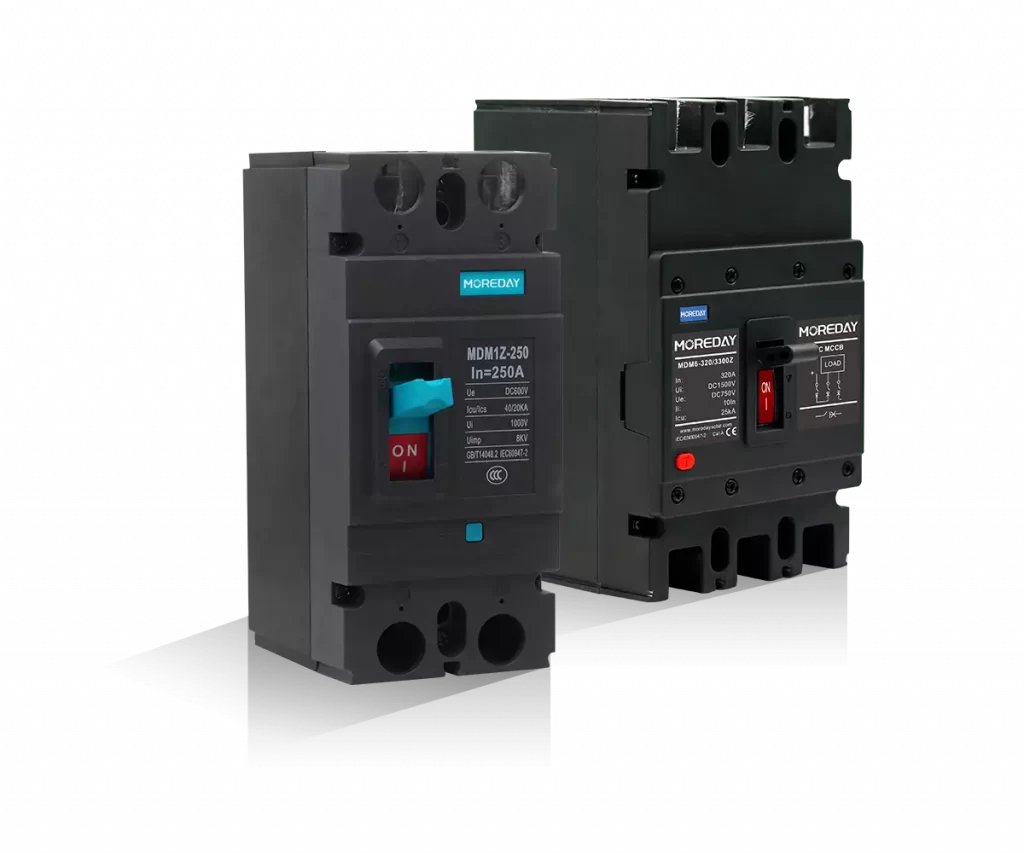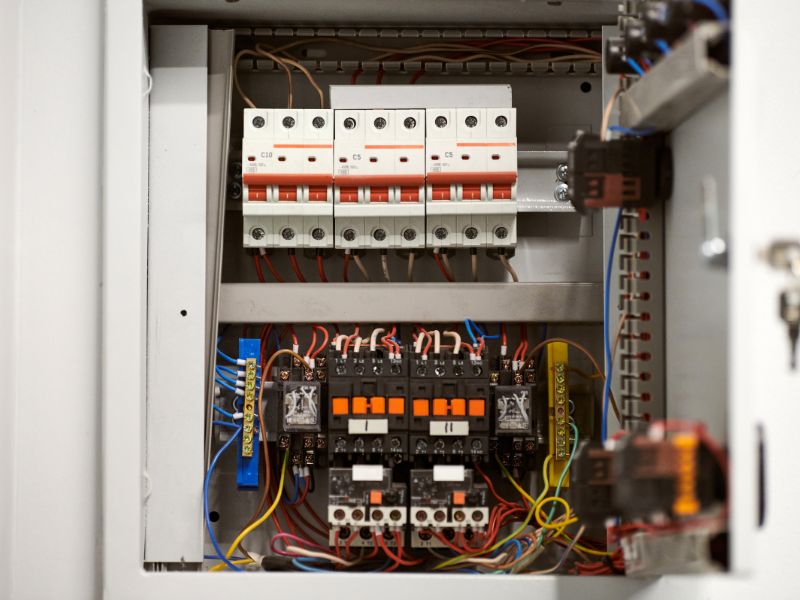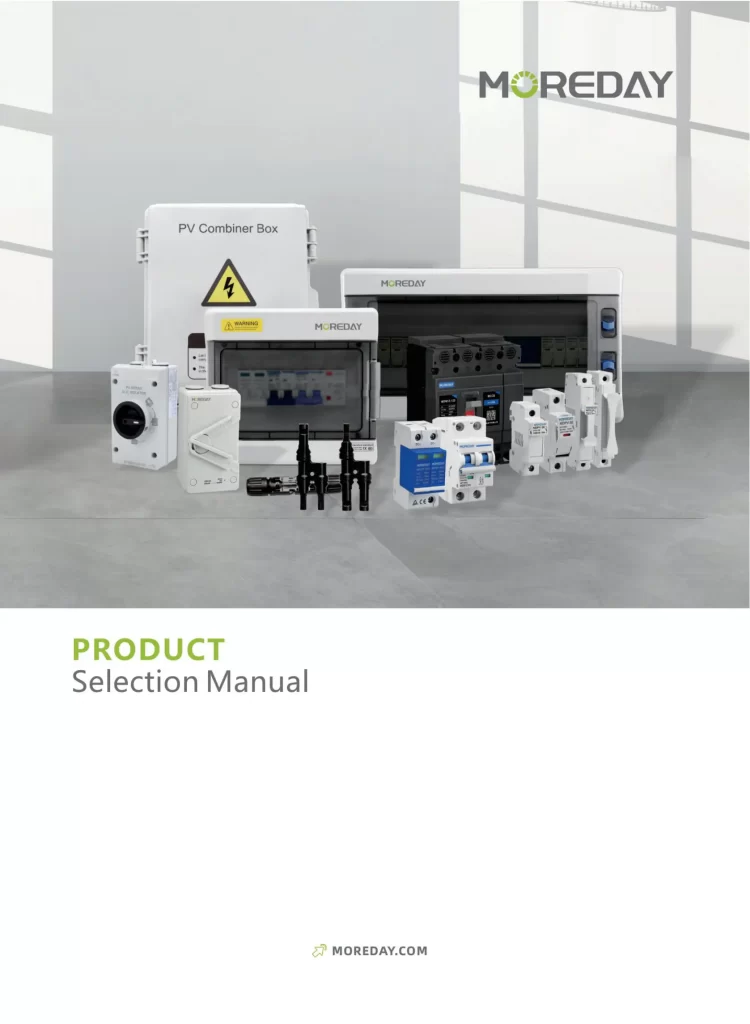An MCB (miniature circuit breaker) is an automatically operated electrical switch that is easy to operate, safe, and reliable, and can effectively protect circuits from excessive current damage caused by overload or short circuits.
MCBs are generally divided into AC and DC MCBs, which are customized to handle the unique characteristics of alternating current (AC) and direct current (DC) respectively. Let’s delve into their differences and choose the right miniature circuit breaker for your application.
What is an AC MCB?

AC MCB (Miniature Circuit Breaker) is an electrical safety device whose main function is to protect circuits from overcurrent damage caused by overload or short circuits. It automatically interrupts the current after detecting an AC system fault, effectively protecting the circuit and preventing potential dangers.
MCBs are commonly used in AC (alternating current) applications in residential, commercial, and industrial environments to protect electrical infrastructure and prevent electrical fires or equipment damage.
What is a DC MCB?

DC Miniature Circuit Breaker (MCB) A protective device used to interrupt the flow of direct current (DC) in a circuit when excessive current is detected that could cause overheating and damage.
Unlike AC miniature circuit breakers, DC miniature circuit breakers are designed to handle sustained arcs that occur in DC circuits when current is interrupted, ensuring safe and effective protection of systems such as solar power installations, battery chargers, and other DC applications.
AC MCB vs DC MCB: What Is the Difference?
When distinguishing between alternating current (AC) and direct current (DC) miniature circuit breakers (MCBs), there are several key aspects to consider:
1. Flow Direction
- AC MCB: In an alternating current circuit, the direction and magnitude of the current change periodically, usually alternating at a frequency of 50 or 60 hertz (Hz).
- DC MCB: In a DC circuit, current flows continuously in one direction without frequency variation.
2. Application
- AC MCB: Widely used in the power supply of homes and commercial buildings, such as lighting and electrical appliance power systems.
- DC MCB: Mainly used in solar energy systems, charging facilities for electric vehicles, DC power supply systems in data centers, etc.
3. Spread
- AC MCB: The propagation of alternating current involves periodic changes in voltage, which can be easily converted between different voltage levels through transformers, making it suitable for long-distance power transmission.
- DC MCB: The propagation of direct current is more suitable for short-distance transmission because it does not easily convert voltage over long distances. It is usually used in low-voltage applications and energy storage systems.
4. Voltage Level
- AC MCB: Designed for use in lower to medium voltage AC systems such as 230V to 440V.
- DC MCB: can be designed for DC systems with low to medium to high voltage (such as 12V to 1000V or higher), with a wider range of voltage levels.
5. Power Outage Performance
- AC MCB: Since the current of alternating current naturally crosses zero, the arc generated when opening the circuit is more easily extinguished.
- DC MCB: Since DC has no zero crossing point, the arc is more persistent and difficult to handle when breaking the circuit, so DC MCB requires special arc extinguishing technology to safely break the current.
6. Construction Differences
- AC MCB: The internal structure is relatively simple because the arc can be automatically extinguished at the natural zero crossing of each AC cycle.
- DC MCB: More complex mechanical and electronic components are necessary to deal with the problem of arcing that does not naturally extinguish during a power outage.
By understanding these key differences, the appropriate MCB for a specific application can be more accurately selected to ensure system safety and efficiency.
If you have purchased a DC circuit breaker, you can check out this article to match MCB accessories to your DC circuit breaker.
Factors to Consider When Choosing AC and DC MCBs
Selecting the appropriate miniature circuit breaker (MCB) for an AC or DC system requires consideration of several key factors to ensure optimal performance and safety in varying electrical environments. For example:
- Consider the voltage level of the system to ensure that the MCB can handle the maximum system voltage.
- Select an MCB with an appropriate current rating to prevent nuisance tripping and ensure overload protection.
- Select a miniature circuit breaker with the appropriate breaking capacity to handle the expected short-circuit current without causing damage.
- Determine whether the electrical system is AC or DC, as this will affect the type of MCB required due to different arc suppression needs.
- Consider environmental factors such as temperature and humidity that may affect MCB performance.
- Verify that MCB meets relevant industry standards and certifications for safety and reliability.
Conclusion
Both AC and DC miniature circuit breakers (MCBs) protect circuits from overloads and short circuits, and there are significant differences in design and application due to the different nature of the current they manage. With this article, you can choose the best miniature circuit breaker for your application.
When choosing a miniature circuit breaker, you need to consider the manufacturer’s service and after-sales, whether it supports wholesale and retail, etc. You can buy miniature circuit breakers on MOREDAY, and they also offer a wide variety of electrical accessories.
Frequently Asked Questions
1. Can AC miniature circuit breakers be used for DC?
No, mainly because AC circuit breakers are designed to handle the alternating nature of AC current, which passes through a zero point and naturally helps extinguish the arc during a fault interruption. DC current is continuous and never crosses zero, causing the arc to be longer lasting and more difficult to extinguish.
Therefore, the use of AC miniature circuit breakers in DC circuits may result in incorrect and unsafe operation because the circuit breaker may not effectively interrupt the circuit during a fault, which may result in damage or a fire hazard.
2. What are the different types of MCB?
The different types of Miniature Circuit Breakers (MCBs) are categorized based on their tripping curves, which include Type B, Type C, Type D, Type K, and Type Z. Each type is designed to respond to different levels of overcurrent, making them suitable for various applications from residential to industrial settings.
Related reading: Solar transfer switch: The complete guide


